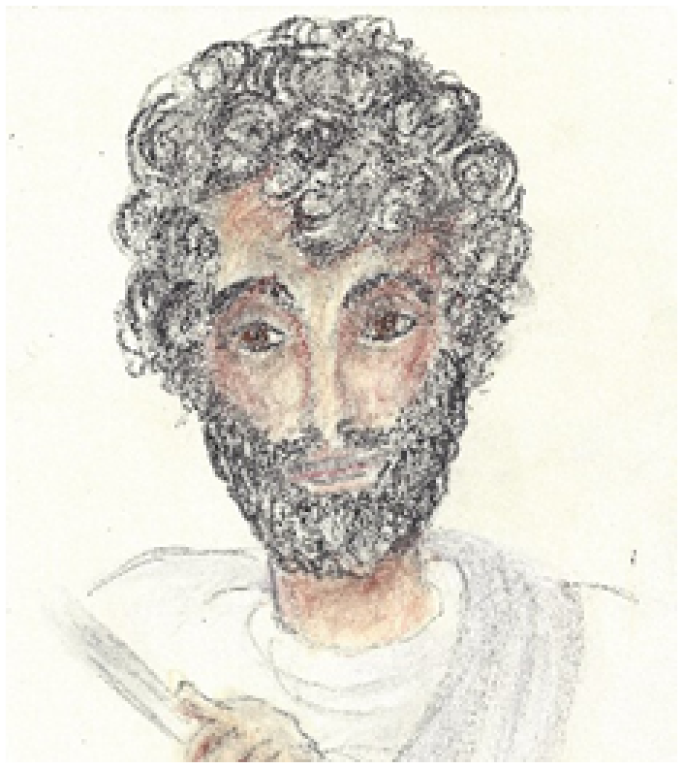The History of St. Paul
SAINT PAUL The Apostle ~ His early life....His Middle Years
written and illustrated by Beverely Lane
Saint Paul was born around 4 BC or a little later in the city of Tarsus. Tarsus was a major city in the province of Celicia, in Asia Minor. Tarsus was known as a place of culture and learning. This region had been made a part of the province of Syria (now in Turkey) which was under Roman rule by the time he was grown. St. Paul was a descendant of the tribe of Benjamin, one of the first 12 tribes of Israel from which the first king of Israel, King Saul, also came. Paul was a Jew and his Jewish name was Saul. It wasn’t uncommon in those days to have two names.
St. Paul’s father was a Roman citizen and probably of some means. (This allowed Saul to claim dual citizenship, both Tarsus and Rome, which was of great help to him in his later life).
Saul was educated in Jerusalem and studied under a great teacher, Gamaliel. By the age of five Paul was probably studying the Hebrew language as well as the Old Testament. Tarsus was under the influence of the Greek and he probably also learned the Greek language at that time. He loved to work with his hands, and also chose to learn tentmaking in his youth. He was a bright, intelligent boy and learned well. He was also full of life and energy, all of which served him well when he entered his adult years. He was probably a Pharisee.
Saint Paul is considered by many to be the second most important person in the history of Christianity, second only to Saint Peter. And many hold him as important as Saint Peter.
The Middle Years
Saint Paul was a tent maker. It was also thought that he was a member of the Sadducees, who were associates of the High Priest and the chief persecutors of the Christian movement in Jerusalem. (Take note of the fact that images and statues of St. Paul that you see today show him with a sword.) It is possible that he believed that (1) Jewish converts to the new movement did not correctly observe the Jewish law, (2) that they mingled with the Gentile converts too much, (3) or that he did not believe that God chose to favor Jesus by raising Him from the dead.
Paul’s persecutions probably found him traveling from synagogue to synagogue urging the punishment of those who believed that Jesus was the messiah. He urged the punishment of such Jews by ostracism or by light flogging, or both. He began his persecutions in Jerusalem, although he later denied having known any of the followers of Christ in Jerusalem until after his own conversion.
St. Paul’s conversion to Christianity is one of the most important events in history. This monumental event occurred during his travel to Damascus. He was on the road to Damascus when suddenly he had a vision that changed his life, his views, and his reason for being. He saw the Lord who came to him in a blinding light. Paul was temporarily blinded by this light, it was so brilliant. He believed that his vision proved that Jesus was the Messiah and the Son of God, and that He would return. He believed that this event was to tell him that he was chosen by God to preach to the Gentiles. At this point he traveled to Arabia, then to Damascus where he remained for three years, after which he went to Jerusalem to meet and get to know the leading apostles there. It was after this that he began his famous missions to the west.

